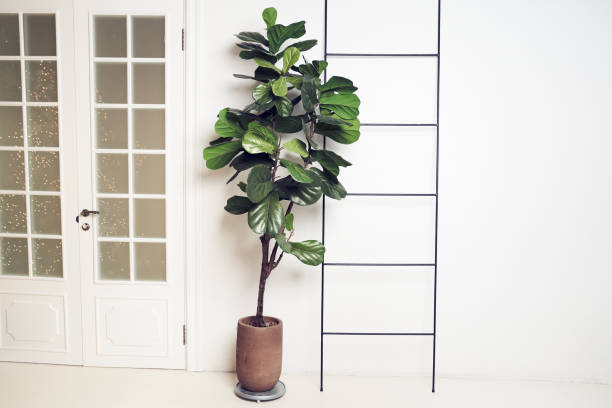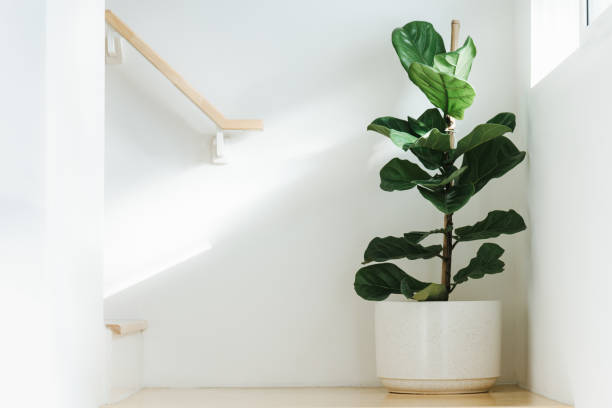The Fiddle Leaf Fig ( Ficus Lyrata) is a stunning plant known for its large, glossy, and violin-shaped leaves. But what makes this plant truly special? Let’s dive in!

What makes Fiddle Leaf Fig So Unique?
The plant leaves are not only large and shiny but also deep green and violin-shaped, giving the plant its distinctive name. With proper care, this plant can grow up to 3-10 feet, making it a stunning addition to any room.
Care Requirements:
Fortunately, these plants are relatively easy to care for and can thrive indoors. Here are the essential care requirements:
- Lighting: Provide bright, indirect light, and place it near a window for natural light. Be cautious, as too little light can cause leaves to drop, and direct sunlight can burn leaves or create brown spots.
- Watering: Water your plant judiciously by checking the soil moisture. Simply insert your finger into the soil up to the first knuckle; if the top inch of soil feels dry, it’s time to water. Avoid letting the roots sit in excess water.
- Temperature and Humidity: It prefer warm temperatures between 60 F and 75 F. They love higher humidity, so consider placing the plant on a humidity tray.
- Soil: Use a well-drained, lightweight potting soil, and ensure the pot has drainage holes. A peat-based mix works well.
- Fertilizing: Give your plant a nutrient boost during the spring and summer months by fertilizing it once a month with a water-soluble fertilizer. Avoid fertilizing in winter.
- Pruning and Maintenance: Prune your plant regularly to maintain its shape and promote healthy growth. Wipe the leaves with a damp cloth to keep them shining.
Propagating your Fiddle Leaf Fig:
Propagating your plant is relatively easy; Here’s how:
- Cut a healthy stem about 6-8 inches long with one node and a few leaves.
- Propagate the cutting in water or soil.
- For water propagation, place the cutting in water, ensuring the node is submerged. Change the water every few days.
- For soil propagation, plant the cutting in a well-draining potting mix, water thoroughly, and maintain consistent moisture levels to support healthy root development. Ensure high humidity until roots develop.

Common Problems:
Be on the lookout for these common issues that may affect your plant’s health
- Yellow Leaves: Overwatering, poorly drained soil, and low light.
- Brown Spots: Direct sunlight, fungal issues, or improper watering can lead to brown spots.
- Leaf Drop: Changes in light, temperature, or watering inconsistency.
Benefits:
The plant offers numerous benefits:
- Air Purification: This plant absorbs toxins and releases oxygen, improving indoor air quality.
- Improved Humidity: They release moisture, making it an excellent choice for dry environments.
Toxicity:
Please note that these plants are toxic to pets.
Discover more from indoorplantart.com
Subscribe to get the latest posts sent to your email.

